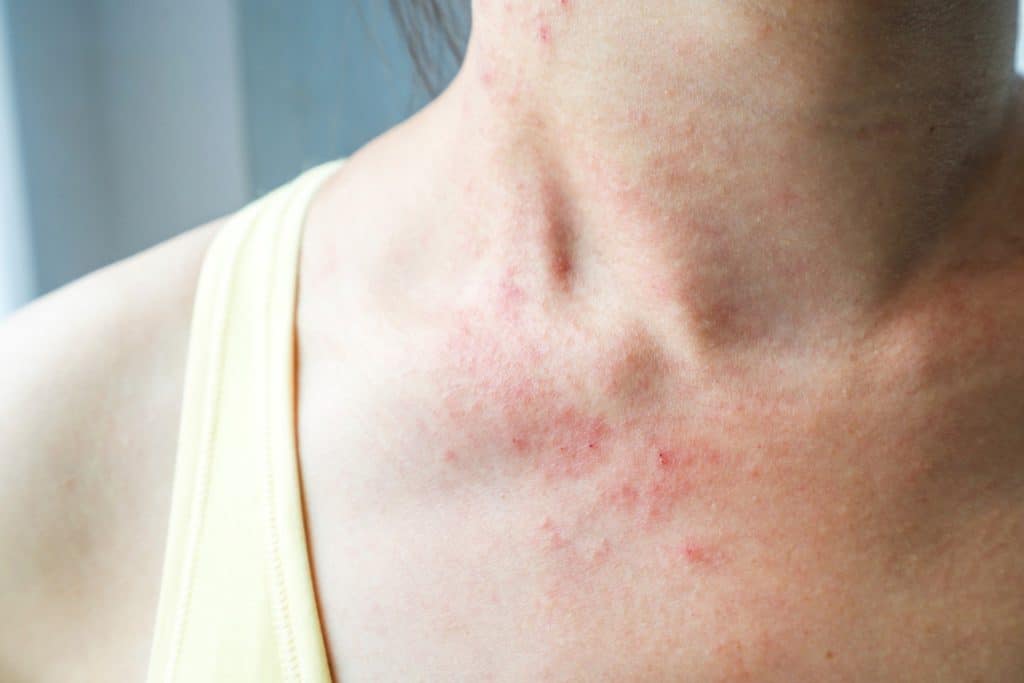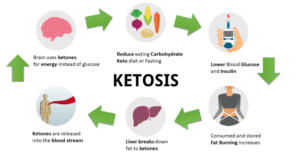Nowadays, many people are interested in and executing the ketogenic diet. As the diet gives great results but some people may experience a keto rash at times. It is important to understand How To Avoid Keto Rash.
The Keto diet is a low-carb, moderate protein, and high-fat diet. When the body is deprived of carbs, it starts utilizing fat as a source of fuel. This leads to increased fat-burning and weight loss.
This article will help you with the knowledge of How To Avoid it. Initial signs of the transition into the keto diet may include brain fog, fatigue, electrolyte imbalance, and even a rash.
Symptoms
It is a rare, condition where rashes and skin patches are seen around the neck and trunk.
Its symptoms may include:
- A red inflamed patch that primarily occurs on the abdomen, chest, and upper back.
- Red spots. that make a web-like appearance are seen.
- A brown patch when the rashes go away
Causes Of The Keto Rash
It is idiopathic but the researchers have found various conditions that can lead to the same. These include:
- Still\’s disease
- H.Pylori infection
These are external agents that may increase it. These include things such as sunlight and excessive heat, sweating, friction and skin trauma, and allergens.
Treatment
There are several at-home treatment methods, should you experience them:
-
Reintroduce Carbohydrates
If you observe that a recent change to the diet is the reason behind the rash, try introducing carbs back to your eating routine.
-
Correct Nutrient Deficiencies
Nutrient deficiencies can play a vital role in some inflammatory skin conditions..
Deficiencies in vitamin A, vitamin B12, Calcium, and vitamin D can lead to these conditions.
Eating an array of colorful fruits and vegetables is a great way to ensure that you’re eating all the nutrients nature has to offer.
-
Eliminate Food Allergens
The keto diet emphasizes low-carb, high-fat foods. Some of the most common foods to eat on the ketogenic diet are eggs, dairy, fish, and nuts, and seeds, to name a few.
Many of these foods happen to be on the list of common food allergens. If a food allergy is the source of any such inflammation then removing that particular food is the best to reduce the condition.
-
Incorporate Anti-inflammatory Supplements
Furthermore, with dietary changes, some supplements help to fight the inflammation better.
Probiotics, prebiotics, vitamin D, and fish oil supplements have all helped improve symptoms of dermatitis.
-
Take Care Of Your Skin
It is extremely important to take care of your skin if you happen to have any skin conditions. Use lukewarm water for showing, cleaning, and use only gentle, scent-free soaps and wash. Try to keep the skin moisturized at all times and avoid exposure to extreme conditions such as wind or sun.
-
Talk To Your Doctor About Medication
Visit a doctor may if home treatments do not work out.
-
Avoid Skin Irritants
A couple of studies found that skin irritants, like chlorinated pool water, may trigger the rash. The chemicals in your detergent or the clothes you are wearing may be causing it to flare up as well.
For these reasons, we recommend avoiding:
- Any chemicals or products that irritate your skin.
- Scratching on the affected area.
- Wearing tight clothes, especially around the skin that is afflicted.
- Using exfoliants on your skin.
- after taking a shower scrubbing too hard with a bath towel
- Using bandages.
- Sleeping over the affected area.
-
Avoid Sweating
It is best to keep yourself from sweating and avoid prolonged exposure to sweat as the acetone in the skin is a major rash trigger. We can conclude that it can also be a consequence of sweating, dietary allergens, nutritional deficiencies, etc. Rest, if one is facing it immediately after eliminating carbohydrates, the re-introduction of carbohydrates will be a great move.
Get yourself started today and Stay tuned for more such keto weight loss journeys, health content, and recipes! Also, don\’t forget to follow us on Instagram for the daily dose of the Keto Lifestyle









